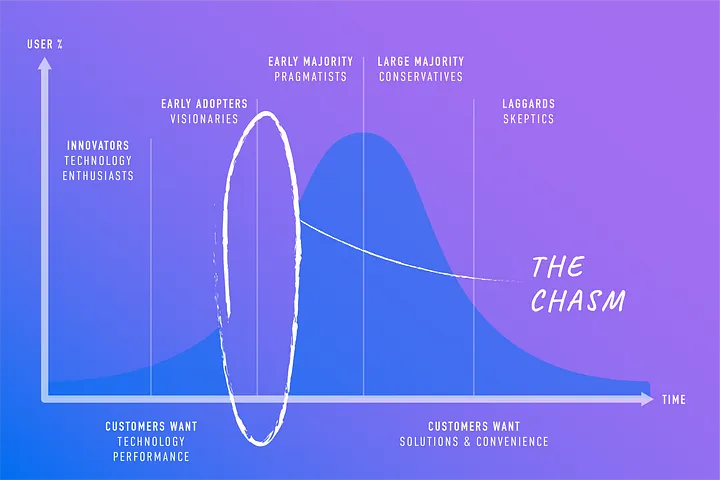Over the past decade, electric vehicles (EVs) have experienced steady adoption growth. However, 2017 marked a tipping point, with 1.2 million new EVs added to the roads globally. This 60% surge brought the total number of electric vehicles in use to approximately 3.2 million, signaling that widespread adoption of e-mobility is imminent.
One of the key challenges accompanying EV adoption is the development of adequate, publicly available charging infrastructure. Today, various charging technologies are vying for market dominance, each seeking to attract and retain customers within their proprietary ecosystems. The result is a highly fragmented market—Germany alone has more than 400 Charging Pole Operators (CPOs)—which causes major inefficiencies.
Meanwhile, the rise of distributed ledger technology, or blockchain, offers promising solutions. With its ability to enable direct, secure value and data exchange without centralized oversight, blockchain presents an opportunity to address inefficiencies in the EV charging sector. Its core attributes—decentralization, trustless cooperation, and peer-to-peer (P2P) payment—could facilitate the seamless communication and collaboration needed among market players that may otherwise lack mutual trust.
Beyond the Hype: Crossing the Chasm
Both EV charging infrastructure and blockchain are technologies still in the early stages of adoption. Everett M. Rogers’ diffusion of innovations theory categorizes adopters into five groups: Innovators, Early Adopters, Early Majority, Late Majority, and Laggards. Geoffrey A. Moore built upon this model in his book Crossing the Chasm, introducing a critical gap—or “chasm”—between Early Adopters (Visionaries) and the Early Majority (Pragmatists). Bridging this chasm is essential for any emerging technology to achieve mainstream success.
For technologies like blockchain and EV charging to thrive, companies must tailor their product development and market strategies to meet the expectations of Pragmatists, who demand proven value, user-friendliness, and regulatory compliance. Failure to do so—seen in technologies such as 3D printing and the Segway—can result in missed potential and niche irrelevance.
Blockchain today is still largely in the hands of Innovators and Visionaries. The release of Bitcoin by Satoshi Nakamoto attracted early tech enthusiasts, and the rise of Ethereum and smart contracts in 2013 further fueled innovation. By 2017, a wave of visionary projects began demonstrating blockchain’s potential in real-world applications—a hallmark of the Visionary phase.
From Crypto to the Real World
Despite the financial success of ICOs and cryptocurrency trading, blockchain’s integration with the real world remains limited. Challenges primarily emerge at the intersection between blockchain systems and real-life applications—particularly in regulation and user experience.
As blockchain projects begin transitioning from Visionaries to Pragmatists, the stakes are high. Pragmatists need to see clear value propositions, technological maturity, and compliance with regulatory frameworks. Without this, many projects may fail to reach mass adoption.
Blockchain in EV Charging: Mid-Chasm Moment
Our experience applying blockchain to EV charging has followed this trajectory. Since launching our Ethereum-based S&C app in April 2017, we’ve attracted significant interest from Innovators and Visionaries. Going live early allowed us to identify and address challenges around regulation, technology, and user experience. Similar initiatives, such as IOTA-based charging poles by ElaadNL and Alliander’s Alva Energy Consortium, further demonstrate blockchain’s potential in this sector.
However, as Moore’s Chasm theory suggests, pilot success alone does not guarantee mainstream adoption. Pragmatists care more about reliability, regulatory compliance, and user experience than cutting-edge innovation. Meeting these criteria is essential to crossing the chasm—and it’s where blockchain applications in EV charging must now focus.
Key Battlefields for Blockchain Integration in EV Charging
We see three major challenges to blockchain’s widespread adoption in the EV charging industry—none of which are primarily technological.
- Ecosystem Collaboration and Business Model Innovation Decentralized technology thrives in fragmented, trust-deficient environments—yet this alone doesn’t guarantee cooperation. In EV charging, dominant players often resist change, guarding their centralized positions. Embracing decentralized, open-source models requires a mindset shift. Companies must recognize that open protocols may carve out parts of their business, and that cooperation, not competition, is the future of value creation.
- Regulation and Governance Contrary to common sentiment, we support regulation—it builds trust and ensures clarity. For blockchain to succeed in real-world use cases, it must adapt to existing regulatory frameworks, not the other way around. Key concerns include data privacy, liability, open-source governance, and the compatibility of decentralized systems with existing legal and financial standards.
- User Experience Mass adoption depends on delivering seamless user experiences. Most customers don’t want to deal with technical details like private key management. As an industry, we must simplify onboarding, payments, and system integration. This includes implementing stablecoins tied to fiat currencies and connecting blockchain systems to existing business software for invoicing and cash management.
Toward a New Paradigm in EV Charging
According to Moore, the Early Majority is influenced by the success of peers. While Visionaries embrace new tech independently, Pragmatists wait for validation. Therefore, achieving widespread blockchain adoption in EV charging requires building trust and showcasing successful implementations among respected industry players.
We believe blockchain can be a game changer in this space. Its foundational features—decentralization, P2P payments, and trustless collaboration—enable new incentive structures that align stakeholder interests. Tokenizing assets and building open-source, decentralized infrastructures backed by transparent governance models unlocks shared value and fosters cooperation among traditionally competitive actors.
In embracing this new paradigm, we aim to advance the mobility revolution and take EV charging to the next level—together.
